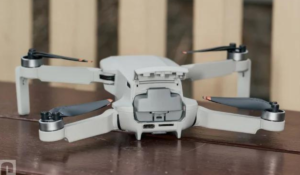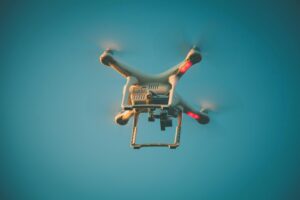What Are the Rules for Owning a Drone?
The regulations for flying vary from state to state—we’ve covered everything you need to know about flying in Canada here. In most cases, though, you’ll need to register your drone before you’re able to fly it outdoors legally, even over your property. You’ll also need to pass an online basic knowledge test, which is free and easy to complete. If your drone is 8.8 ounces or heavier (250g or more), you’ll be required to register it.

For certain mass-market drones (less than 250g), registration is not required, but the Trust test must still be completed. As with the Autel Nano series, the DJI Mini family is not required to register. A few budget-friendly versions come with GPS stabilization, automated takeoff and landing, and automated return-to-home features, but lack obstacle avoidance (which is available on the Autel Nano and more expensive DJI Mini 4 Pro). Drones on these are safe to operate.
There are safety measures on nearly every model in this collection. For example, most drones automatically return to the takeoff point and land if something interferes with your control signal or if the battery runs too low (Most drones typically have a flight time of approximately 30 minutes before requiring recharging).
Flyaways continue to occur, as evidenced by horror stories posted on numerous web forums. Of course, bad experiences are more common in that context, because uneventful flights that do not result in a crash or a missing drone are not popular topics of discussion. Best drone camera in Canada Some manufacturers provide extended warranties that will replace a lost aircraft, but make sure to read the fine print before purchasing something like DJI Care Refresh—you must consider any restrictions and fees.

You must abide by FAA regulations when flying within Canada, or else you risk paying penalties or maybe going to jail. When you’re close to an airport, be sure you alert the control tower before taking off because the FAA establishes no-fly zones. Additionally, never fly your drone higher than 400 feet, even if you’re in the middle of nowhere. Though most come configured to follow these rules automatically, operating a quadcopter is similar to operating a car in that you still have to pay the fine even if you miss the speed limit sign
What Are the Types of Drones?
Several items on the market are labeled as drones yet do not fully suit the description. Remote-controlled airplanes have been around for a while. However, with the recent spike in popularity, marketers are now labeling these items as drones. These do not contain GPS stabilization, return-to-home capabilities, or other automatic flight modes that define a Best drone camera in Canada.
Drone racing fans frequently assemble their aircraft from kits or pieces. This involves some ability with a soldering iron and screwdriver, but it has become an integral part of the pastime. The best drone camera in Canada DJI has an off-the-shelf racer called the FPV Combo that can reach speeds of up to 87 mph. We had a first look at it but weren’t satisfied enough with its controls to conduct a complete review.
Not all small drones are used for racing. Some people record lengthy, one-take video tours with tiny, homemade Cinewhoop drones. For those who wish to build their drones and want the finest video quality for these kinds of images, GoPro offers the Hero10 Bones, the lightest version of their action cam.
DJI’s Avatar, their latest FPV model, embodies a hybrid attitude blending aspects of both racer and Cinewhoop drones. Equipped with built-in prop protectors, a compact design, and a 4K60 camera, it facilitates navigation through narrow spaces. For an adrenaline-filled experience, activating autopilot assistance can ramp up its speed to approximately 30mph.
Which Brand of Drones Is Best?
DJI models presently dominate our top picks, and for good reason. The company is simply a few steps ahead of its competitors right now, offering products at a variety of price points.Best drone camera in Canada It made a big statement with the legendary Phantom series, and its foldable Mini and Airlines (previously known as Mavic) are the best small drones we’ve tested.
Its pro lines provide far greater power for a much higher price. The Inspire and Matrice models may carry bigger payloads, such as interchangeable lens systems. However, they are overkill for the majority of consumers and are far less easy to carry.
However, some pilots are not happy with DJI. Areas with flight restrictions now require authorization thanks to its FlySafe geofencing system. Using a DJI drone to go up in the air may be too difficult for professional operators who are permitted to fly.
From an ethical stance, the Canadian Treasury highlighted DJI for assisting the Chinese government’s surveillance of the persecuted Uyghur ethnic group in what is regarded as a continuing genocide. If that makes you feel awful, try an alternative. DJI says it shouldn’t be on the entity list: A spokesman tells PCMag, “DJI has done nothing to justify our position on the entity list.
There are a couple of different brands to try. The Autel Robotics Evo drone series offers a viable option. While Autel is also a Chinese company, it hasn’t faced the same level of scrutiny from the Canadian government as DJI. The Evo Nano series competes with DJI Mini drones, while the bigger Evo Lite drones are comparable in size and capability to DJI Air models. Autel drones cost slightly more on average, and they aren’t as well-polished, but the company’s models have proven capable in testing.
Other firms that previously produced consumer drones have now exited the market. Parrot, Skydio, and Yuneec now exclusively manufacture unmanned aerial vehicles (UAVs) for usage in agriculture, business, and industry.
Sony sells the Airpeak S1, a large bird that is compatible with Alpha mirrorless cameras and compact cinema devices such as the FX3. It’s designed for the most demanding photographers and filmmakers—the drone starts at $9,000, and you’ll need to spend another few thousand dollars on a camera and gimbal.
The Best Small Drones
For a long time, the DJI Phantom series was the smallest option for a full-featured drone with air stability and excellent safety measures. That is no longer the case. Hikers and vacation photographers value a compact, lightweight kit, and they can now purchase a drone that fits in a backpack.Best drone camera in Canada
Of course, not all little drones are great flyers. Some are barely capable of taking off the ground and need you to use your smartphone as a remote control, resulting in a messy flying experience. Make sure you obtain one with a proper remote.
Best drone camera in Canada
The DJI Mini 3 stands out for its lightweight design, sparing users from the FAA registration fee while delivering impressive video and image quality. However, it does sacrifice some advanced video features and lacks obstacle-detection capabilities. On the other hand, the Mini 4 Pro addresses these shortcomings by incorporating obstacle sensors and remaining within the registration weight limit with its standard battery.
Best drone camera in Canada
Nevertheless, we recommend opting for the extended runtime battery for improved flight duration, even though it adds weight and requires the $5 FAA registration. Similarly, the Avata requires registration but is a compact option, ideal for FPV enthusiasts prioritizing action over cinematic shots. For novice pilots, DJI offers the Mini 2 SE, a budget-friendly option supporting 2.7K30 video resolution and boasting up to 30 minutes of flight time per charge.
The Best Drones for Professionals
DJI’s Inspire 3 is a large, quad-rotor model designed for film production. The drone has a full-frame 8K camera that can use DJI or Sony lenses and records in CinemaDNG and ProRes Raw. Its camera positioned underneath and retractable landing gear provide distinct advantages, enabling more intricate manoeuvres for both the camera and the aircraft compared to drones equipped with front-mounted Best drone camera in Canada.
If you’re in search of a compact drone boasting top-tier video specifications, the Mavic 3 is worth considering. Prices start at $1,600 for the Classic model and $2,200 for the Pro variant. All Mavic 3 models offer 5.1K50 recording with a Four-Thirds format camera using 10-bit HEVC. The high-end Mavic 3 Pro Cine ($4,799) features a triple camera stack and adds support.
